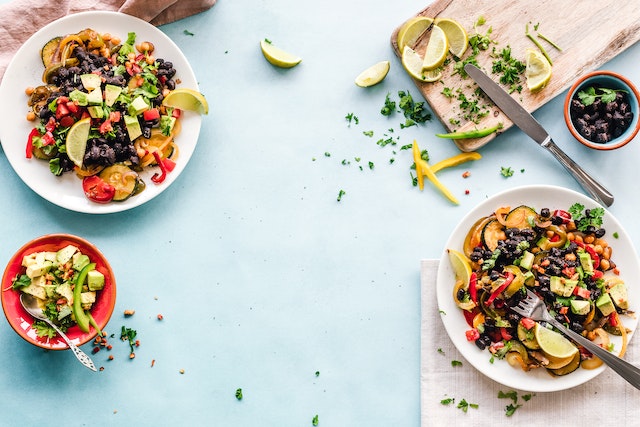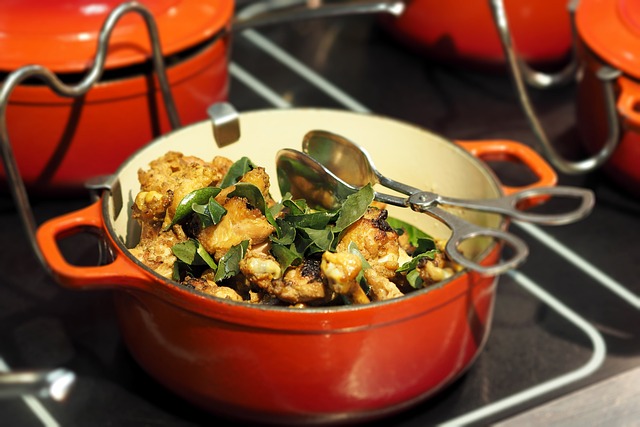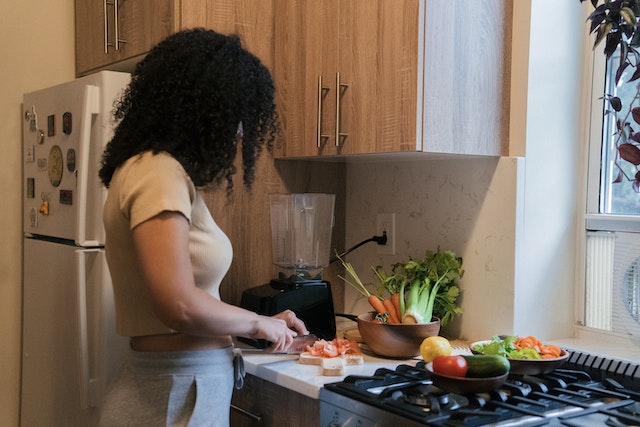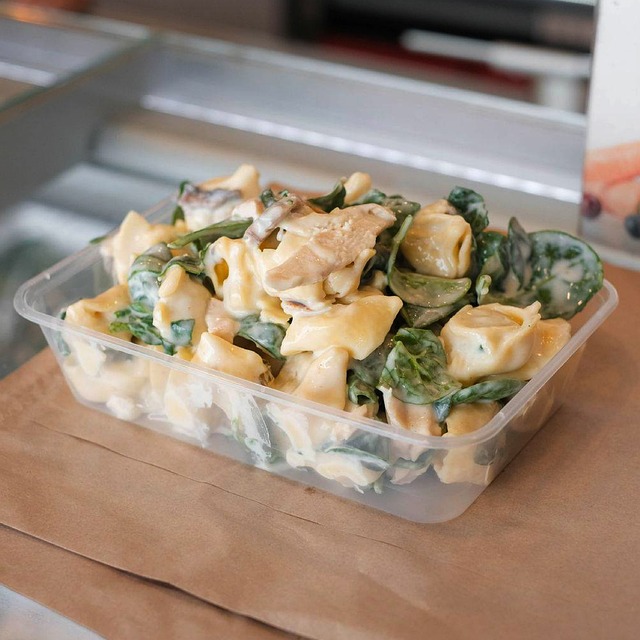
Rummaging through my fridge for the umpteenth time, I couldn’t help but feel tired of eating the same leftovers again and again. Instead of heading to the grocery to add more to my shopping cart, I decided to get creative and experiment with leftover ingredients to create delicious and unique dishes.
Benefits of making the most of leftovers
As someone who enjoys cooking, I find myself continuously looking for ways to reduce waste and save money on groceries. Repurposing leftover ingredients has become a fundamental aspect of my cooking routine for these reasons, and it has made my life easier in many ways.
Reducing food waste is essential for the betterment of the environment. The amount of food waste produced by households worldwide is staggering, and it has a significant impact on our planet’s natural resources. Using leftovers instead of throwing them away can help reduce this waste and minimize our carbon footprint.
Moreover, repurposing leftovers saves money and reduces the frequency of grocery shopping trips. One of the most significant expenses among households is food, and optimizing the use of ingredients can help save a substantial amount of money in the long run. Not only does it reduce food waste, but it also reduces the need to buy more ingredients when those ingredients may already be readily available in the fridge.
Reusing leftovers is a convenient way to save time and energy. Cooking can be a time-consuming process, and having prepared ingredients to work with simplifies the process. Plus, if you’re short on time, repurposing leftovers can provide an easy and quick solution to dinner or lunch.
Planning for leftovers
When it comes to reducing food waste and maximizing the value of your groceries, strategic meal planning is key. If you don’t have any ideas for leftovers, one tip is to think about what things go well together. I’ve discovered that a little planning goes a long way in creating delicious and satisfying meals while minimizing waste. Here are some tips I’ve found helpful in planning for leftovers:

Cook bigger batches
First and foremost, I approach my meal planning with the intention of generating leftovers. By cooking larger portions or incorporating ingredients that can be repurposed, I ensure that there will be ample leftovers to work with. For example, I might roast a whole chicken on Sunday night, knowing that the leftovers will serve as a versatile protein for the week ahead.
Plan for storage
Once I’ve enjoyed a meal and have leftovers to spare, proper storage becomes crucial to maintain their freshness and quality. I invest in airtight containers that are suitable for refrigerating or freezing leftovers. Clear containers help me easily identify what’s inside, preventing any forgotten or neglected leftovers at the back of the fridge. I make it a habit to label the containers with the date to keep track of how long the leftovers have been stored.
Observe food safety guidelines
Understanding food safety guidelines is also essential when planning for leftovers. I’m mindful of the “two-hour rule,” which advises refrigerating perishable foods within two hours of cooking to prevent bacterial growth. I ensure that leftovers are cooled down promptly before transferring them to the refrigerator. When reheating leftovers, I use a food thermometer to ensure they reach the proper internal temperature to eliminate any potential foodborne bacteria.
Get creative
To maximize the potential of my leftovers, I’ve learned to get creative in the kitchen. Leftover proteins like chicken, beef, or fish can be transformed into entirely new dishes, such as sandwiches, salads, or stir-fries. Vegetables from a previous meal can be repurposed in soups, omelets, or even blended into flavorful sauces. I often find myself experimenting with different flavors and cuisines to keep things exciting.
Develop a weekly meal plan
In addition to strategic meal planning and proper storage, I’ve also developed a weekly leftover meal plan. This helps me stay organized and ensures that no leftovers go to waste. By incorporating leftover nights into my meal plan, I’m able to utilize all the remnants from the week’s meals in creative and delicious ways.

Creative ideas for leftover makeovers
- Repurposing cooked protein: One of my go-to leftover makeovers is turning cooked proteins, like chicken or beef, into new and exciting dishes. By shredding or chopping the meat and adding different ingredients, I can create something entirely different from the original dish. For example, leftover chicken can easily be turned into a flavorful chicken salad with some celery, grapes, and a drizzle of mayonnaise. Or, if I’m in the mood for something more Mexican-inspired, I’ll add leftover chicken to a tortilla with some salsa, avocado, and cheese for a quick and easy quesadilla.
- Reusing cooked vegetables: Repurposing leftover vegetables is another favorite of mine. Whether I’m adding them to a soup or stir-fry, veggies are incredibly versatile and can complement a variety of dishes. One dish that I enjoy making with leftover veggies is a hearty vegetable soup. I throw in any leftover vegetables from the week, add some chicken or vegetable broth, and let it simmer for a few hours until the flavors meld together. It’s a perfect way to use up any produce that may be on its last legs.
- Reinventing leftover pasta and grains: Incorporating leftover grains and pasta into casseroles or grain bowls is also a great way to use up leftovers. One dish that I love making with leftover grains is a breakfast bowl. I’ll add leftover quinoa or rice to a bowl, top it with some scrambled eggs, avocado, and hot sauce for a protein-packed start to the day. Similarly, leftover noodles can be incorporated into a stir-fry or made into a cold pasta salad with some crunchy vegetables and a zesty dressing.
- Make the most of sauces, prices and dressings: Getting creative with sauces, dressings, and spices is another way to bring new life to leftovers. Incorporating different flavor profiles into a dish can transform it entirely. For example, leftover roasted vegetables can be tossed in a creamy tahini dressing for a Mediterranean-inspired salad, or leftover chicken can be marinated in a spicy harissa sauce for a Middle Eastern twist.
More leftover meal ideas

The key to making the most of leftovers is to not be afraid to mix and match flavors and ingredients. Here are more hearty leftover meals you might want to try:
Leftover roast beef ad vegetable stir-fry: One of my favorite recipes to make with leftover roast beef is a flavorful beef and vegetable stir fry. I simply sauté some onions, garlic, and ginger in a hot wok, add in the leftover roast beef, and throw in some broccoli, carrots, and bell peppers. A drizzle of soy sauce and sesame oil finishes off the dish with a burst of umami flavor.
Leftover savory potato pancakes: Leftover mashed potatoes can be transformed into crispy and savory potato pancakes. I mix in some grated parmesan cheese, diced onions, and chopped scallions into the mashed potatoes, form them into small patties, and fry them until golden brown. Serve them with a dollop of sour cream and chives for a delicious appetizer or side dish.
Leftover vegetable frittata: A frittata is a versatile dish that can be made with almost any leftover vegetables, cheese, and herbs. Whisk together some eggs and milk, and then fold in the leftover veggies. Top it off with some grated cheese and herbs, then bake in the oven for a quick and easy breakfast or lunch.
Leftover spaghetti carbonara: Spaghetti carbonara is a classic Italian dish that can be made with leftover spaghetti and bacon. Fry the bacon until crispy and then add in the leftover spaghetti and whisked eggs. Cook until the eggs are set and then top it off with some grated parmesan cheese for a delicious and hearty meal.
Leftover chicken quesadillas: Quesadillas are a great way to use up leftover proteins like chicken. Simply layer cooked chicken with cheese, beans, and any other veggies you have on hand, then fold it in a tortilla and fry up in a pan for a delicious and easy dinner.
Leftover pumpkin pie smoothie: Don’t let your leftover pumpkin pie go to waste! Blend it up with some almond milk, cinnamon, and vanilla extract for a healthy and delicious smoothie that can be enjoyed for breakfast or as a mid-day snack.
In the end, making the most out of leftovers is all about creativity and resourcefulness. Don’t be afraid to experiment with different ingredients and techniques, and you might just discover a new favorite dish.
